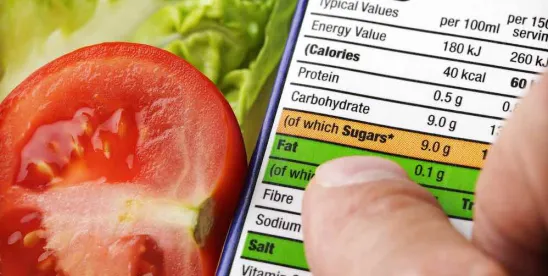Key Takeaways
- What happened: Two recently enacted laws in Louisiana and Texas will each require separate warning labels on the packaging of food sold in their state if the food contains any of 44 specific ingredients. The lists of ingredients in Louisiana’s Senate Bill 14 (SB 14) law and Texas’s Senate Bill 25 (SB 25) law substantially overlap but are not identical.
- Who this affects: Food and chemical manufacturers, including suppliers of food additives, ingredients, and color additives.
- What you should do: Potentially affected food companies and distributors should review the two lists and check whether any of the listed ingredients are present in their food products and determine appropriate next steps. Companies should monitor developments, such as potential litigation challenging one or both laws, action by the Food and Drug Administration (FDA) that preempts those laws, and proposed implementing regulations with opportunities for public comment.
Louisiana and Texas are not the first states to require special warnings on food labels. Many states regulate food labeling to some degree. For example, California’s Proposition 65 requires warnings about food containing certain chemicals, which manufacturers may display on labels. However, these new Louisiana and Texas laws mark a significant shift in state approaches to chemicals and additives. As recently as August 2024, ten Republican Attorneys General (including Louisiana’s) petitioned the U.S. Environmental Protection Agency (EPA) to bar California from mandating cancer risk warnings on pesticide labeling under Proposition 65. The apparent shifts in Louisiana’s and Texas’s food chemical approaches align with the Trump administration’s Make America Healthy Again (MAHA) movement and its focus on chemicals in and on food.
The Laws Will Impose Different Labeling Requirements in the Two States
Louisiana Governor Jeff Landry signed Senate Bill 14 (SB 14) into law on June 27, 2025. The law will require a statement with a QR code on packaging for food that contains one or more of 44 ingredients (see B&D’s table of ingredients) if the food is “intended for human consumption.” Under SB 14, in certain circumstances, companies will not be required to add a warning label, such as when food is prepared and packaged in a retail establishment or for FDA-regulated drugs and dietary supplements. The labeling portion of the law will take effect on January 1, 2028.
In addition to the 41 ingredients included in the Texas law, the Louisiana law includes three commonly used artificial sweeteners: aspartame (approved by FDA in 1974; sold under brand names such as Nutrasweet®, Equal®, and Sugar Twin®), sucralose (first approved by FDA in 1998; sold under the brand name Splenda®), and acesulfame potassium (first approved by FDA in 1988; sold under brand names such as Sunett® and Sweet One®).
Texas Governor Greg Abbott signed Senate Bill 25 (SB 25) into law on June 22, 2025. The law will require a warning label on packaging for food that contains one or more of 44 ingredients if (1) the FDA “requires the ingredient to be named on a food label” and (2) “the ingredient is used in a product intended for human consumption.” Warning labels will not be required under certain circumstances, such as when food is labeled, prepared, and sold within a food establishment; is regulated by the U.S. Department of Agriculture’s (USDA) Food Safety and Inspection Service; is used in a drug or dietary supplement; or is used in certain pesticide applications. The law will take effect on September 1, 2025, and the new requirements will apply to labels developed or copyrighted on or after January 1, 2027. Along with the 41 ingredients included in the Louisiana law, the Texas law also includes diacetyl tartaric and fatty acid esters of mono- and diglycerides (DATEM), ficin, and titanium dioxide.
Warning Label Text
- Louisiana’s SB 14 will require food packaging to contain a QR code with a statement that informs consumers how they can access additional ingredient information by scanning the code. The QR code must link to a notice on the manufacturer’s website that says “NOTICE: This product contains [insert ingredient here]. For more information about this ingredient, including FDA approvals, click HERE.”
- Texas’ SB 25 will require food packaging to display warning labels that say “WARNING: This product contains an ingredient that is not recommended for human consumption by the appropriate authority in Australia, Canada, the European Union, or the United Kingdom.”
Placement and Visibility
- SB 14 will require a statement on food packaging “adjacent” to the QR code explaining that consumers can find additional information by scanning the code. The web-based notice will need to be in a “prominent location” on the manufacturer’s web page.
- SB 25 will require manufacturers to print the warning label on food packaging in a font size “not smaller than the smallest font” used to disclose FDA-required information. The warning must use “sufficiently high contrast” to ensure visibility, convey a message that an “ordinary individual” is likely to understand, and appear in a “reasonably visible” location. In addition, manufacturers and retailers that sell food online within Texas must also include the warning either on their websites or by “otherwise communicating the information to the consumer.”
Enforcement
- SB 14 will make any violation of the labeling requirements a “violation of state Sanitary Code.”
- When a suspected violation occurs, SB 25 will allow the Texas Attorney General to seek an injunction and/or a civil penalty of up to $50,000 per day for each violation. The law will also allow the state to require reimbursement for the cost of investigating and bringing an enforcement action.
Federal Preemption
- SB 14 contains a federal preemption clause that overrides labeling requirements if the federal government issues an action (including a statute, regulation, or guidance) that is “at least equivalent or more restrictive” than the requirements in the state law.
- SB 25 contains a federal preemption clause that overrides labeling requirements if FDA or USDA (1) prohibits use of the ingredient, (2) requires warning or disclosure statements for the ingredient, (3) determines the ingredient is “safe for human consumption,” or (4) requires a labeling statement regarding ultra-processed or processed foods.
Additional Requirements Under Each Law
School Lunches
SB 14 restricts schools from serving food containing any of 15 listed ingredients. While SB 25 does not address school lunches, Texas recently passed a separate law, Senate Bill 314, that restricts the use of 17 ingredients in school meals. Arizona also recently passed House Bill 2164, which prohibits schools from serving food that contains 11 different ingredients. B&D recently discussed other states' proposed legislation that would restrict serving foods containing various chemicals in schools.
Seed Oil Disclaimer
SB 14 does not require retail establishments to add warning labels to food packaging that they prepare and label in-house. However, SB 14 requires retail establishments to provide a disclaimer on any food prepared using “seed oil.” The disclaimer will need to be displayed either on the establishment’s menu or in another “visible location” at the establishment.
Other
SB 14 also contains nutrition and health continuing education requirements for certain healthcare providers.
SB 25 also contains physical exercise requirements for students in grades five and below, requires the development of nutrition and wellness curricula for high school and higher levels, and establishes a Texas Nutrition Advisory Committee.
Key Labeling Requirement Implementation Dates
| LA Labeling Requirements | TX Labeling Requirements |
|---|---|
| SB 14’s labeling requirements will take effect on January 1, 2028. | SB 25 will take effect on September 1, 2025. |
| The law does not contain any timelines for implementing regulations. | December 31, 2025: The Texas Health and Human Services Commission must promulgate regulations to implement the law by December 31, 2025. |
| The law does not specify whether it will apply to existing food labels or only those developed after the law takes effect. | January 1, 2027: The law will only apply to food labels developed or copyrighted on or after January 1, 2027. |
Prospects for Litigation
The food industry will likely file challenges. A federal court recently enjoined a provision of California’s Proposition 65 food warning regulation on First Amendment grounds.
We expect that SB 14 and SB 25 may face similar claims, as well as other claims such as federal preemption.
Next Steps
- Food companies should evaluate which listed food ingredients appear in their food products and plan accordingly.
- Food companies should prepare to provide comments on the upcoming Texas Health and Human Services Commission regulations. Food companies should look for similar opportunities with Louisiana regulators.
- Another key issue for food companies will be identifying which ingredients trigger preemption under the laws. For SB 14, food companies should track any comparative federal labeling requirements. For the SB 25, food companies should identify chemicals preempted by either relevant federal labeling requirements or other relevant USDA or FDA actions for each separate chemical. For example, FDA will occasionally revoke an existing additive or color approval through its post-market chemical review process. Recently, FDA announced major changes to its post-chemical review program and sought public comments on a prioritization method for identifying existing chemicals for review.
Heather Olson contributed to this article






 />i
/>i

